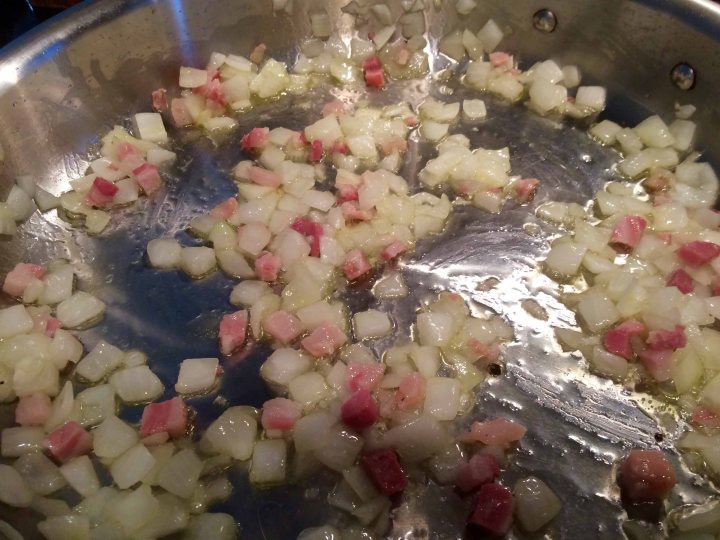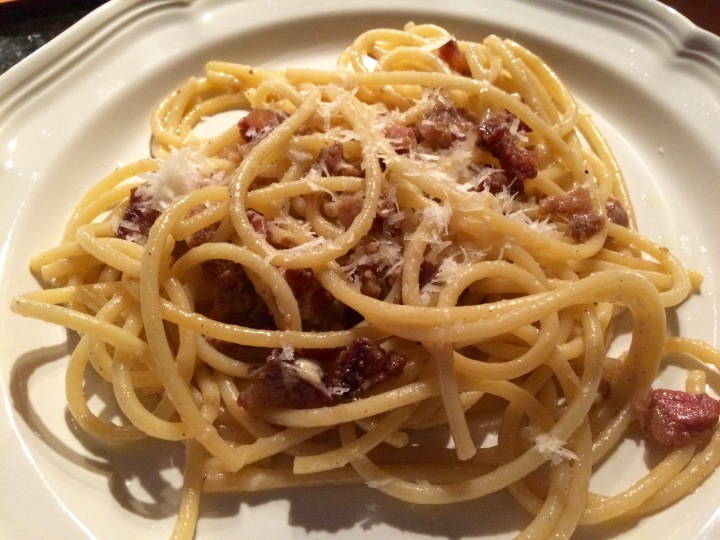Early on Sunday evening, we usually sit down with a cocktail and some appetizers to watch the string of cooking shows on PBS. They’re a welcome calm alternative to the increasingly competition-driven line-up on the Food Network.
One of our favorite shows is America’s Test Kitchen, which is both entertaining and instructive. A recent episode of the series included a relatively simple weeknight recipe for sweet Italian sausages with seedless red grapes and balsamic vinegar that we both thought had to be on our table before the end of the week. We found the combination of ingredients intriguing and came away with a better all-purpose method for browning and cooking sausage. I’m including a link to the show’s website, which, if you’re not a registered user, requires you to sign up. Registration is free. It’s worth the time and this page has an informative article on cooking sausages.
I served the sausages with my aunt’s Italian potato pie, but they would also go well with polenta.
Italian Sausage with Grapes and Balsamic Vinegar (Adapted from America’s Test Kitchen)
INGREDIENTS
1 tablespoon extra-virgin olive oil
1 1/2 pounds sweet Italian sausage
1 pound seedless red grapes, halved lengthwise (3 cups)
1 large onion, halved and sliced 1/8” thin
1/4 cup water
1/4 teaspoon pepper
1/8 teaspoon salt
1/4 cup dry white wine
1/2 tablespoon dried oregano
2-3 teaspoons balsamic vinegar
2 tablespoons chopped fresh mint
INSTRUCTIONS
1. Heat oil in 12-inch skillet or sauté pan over medium heat until shimmering. Arrange sausages in pan and cook, turning once, until browned on 2 sides, about 5 minutes.

2. Take off the heat, tilt skillet and carefully remove excess fat with paper towel.
3. Return the pan to the stove and distribute grapes and onion over and around sausages.

4. Add water and immediately cover. Cook over medium heat, turning sausages once, until they register between 160 and 165 degrees and onions and the grapes have softened, about 10 minutes.

5. Transfer sausages to paper towel–lined plate and tent with aluminum foil.
6. Return skillet to medium-high heat and stir pepper and salt into grape-onion mixture. Spread grape-onion mixture in even layer in skillet and cook without stirring until browned, 3 to 5 minutes.

7. When browned, stir and continue to cook, stirring frequently, until mixture is well browned and grapes are soft but still retain their shape, 3 to 5 minutes longer.

8. Reduce heat to medium, stir in wine and oregano, and cook, scraping up any browned bits, until wine is reduced by half, 30 to 60 seconds.


9. Return sausages to the pan to heat briefly.

10. Remove pan from heat and stir in vinegar. Sprinkle with mint and serve.

Wine Pairing: Dry Riesling, Morellino di Scansano



















